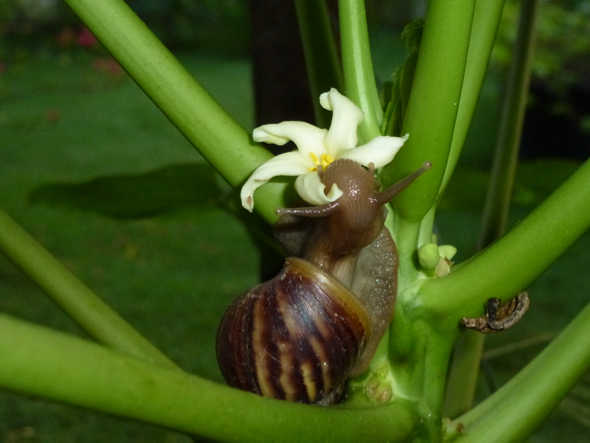The Giant African Snail (Achatina fulica) with its massive hard shell is an invasive species. Movements is from the powerful foot muscles that release a slippery mucous. This mucous aid in movement over rough surfaces. What is not often realised is that this snail does not always moves on the ground. When necessary it climbs upwards, as in this case where it climbed a 2 metres Papaya (Carica papays) plant to get at its flowers. The video below shows it eating the petals as well as the flower stalk of a male flower.
The snail’s tongue, known as the radula, has small spikes that allow it to rasp plant parts. Unfortunately the video does not show the radula of the snail as it is mostly concealed behind its thick ‘lips’.
In the aquatic grazing snails, their radulae are more easily observed when feeding, as this structure would be exposed and prominent against the glass of an aquarium – see HERE.
The Giant African Snail is predated by the Common Palm Civet (Paradoxurus hermaphroditus).
YC Wee & Dr Leong Tzi Ming
Singapore
28th December 2015









